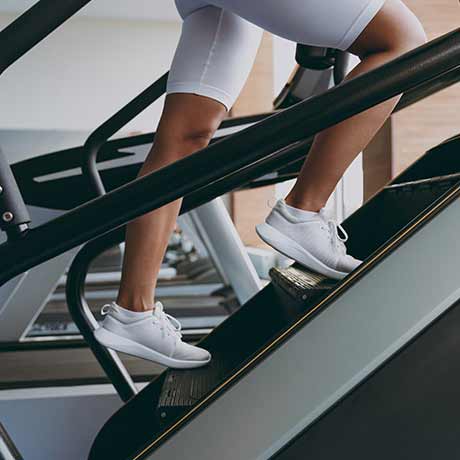- Private & confidential service
- Genuine medication
- All-inclusive service - No hidden fees
- Next day delivery
- Weight Loss
- The benefits of exercise for weight loss
- Weight lifting for weight loss
Weight lifting for weight loss
Weight lifting (also known as strength training) is a type of physical exercise where your muscles are challenged with resistance. This can be in the form of:
- free weights
- weight machines
- resistance bands
- your body weight
When you train with resistance your muscles increase in strength and size. This can help with weight loss. Growing your muscles speeds up your metabolism, which causes you to burn more calories daily.
This article will outline 6 essential strength training exercises so that you can target all of the muscle groups in your body. It will also inform you about sets, reps, how much weight you should lift, and how you can use weights within circuit training.
Is weight lifting good for weight loss?
As with all forms of exercise, weight lifting helps you to lose weight by burning more calories.
However, unlike cardio for weight loss (which is all about burning calories), lifting weights can increase your metabolism.
When you increase your muscle mass (by building your muscles with weights), your body requires more energy, and therefore more calories.
This results in an increase in your metabolic rate (how many calories you need per day).
By increasing your metabolism, you can speed up the rate of your weight loss journey.
Compound exercises
Strength training exercises can be either compound or isolation.
Compound exercises recruit multiple muscles. For example, squats are a compound movement because they hit your quads, hamstrings, glutes and abdominal muscles.
Isolation exercises recruit just one muscle. For example, bicep curls focus on (or isolate) the bicep muscle only. Another example would be calf raises.

For weight loss, try to focus on doing mostly compound exercises. Because they target more muscles, they burn more calories. They will also lead to more overall muscle growth.
Sets and reps
If you’re new to strength training, it’s important to know the meaning of ‘reps’ and ‘sets’.
- ‘reps’ (short for repetitions) refers to one movement, e.g. one squat
- ‘sets’ refers to a collection of reps, e.g. 1 set of squats might contain 10 reps
Most strength training workouts are centred around how many reps and sets you do. Below is an example of a full-body workout, which includes 4 compound exercises:

Here, each exercise is done for 4 sets. The amount of reps you do is up to you, but most beginners should be doing 1-15 reps per set. The last few reps should be the most challenging ones.
Each week you can repeat the same number of sets and reps which is good for activating your muscles and metabolism. Focus on slightly increasing the weight on each set with each week that passes to activate your muscles and metabolism even more.
How much weight should I lift?
If you are completely new to strength training, attempting heavy weights will most likely leave you with an injury. It’s best to start off slow, and gradually build up the weight over weeks and months.
Once you have chosen which exercise you’re going to perform, try doing 8 reps without any weight at all. Check your form in the mirror, and only pick up the weights once you feel confident enough to do so.
Start with a small pair of dumbbells (anywhere between 2 kg and 10 kg). If you are using a machine, start with the lightest weight option.
Aim to challenge your muscles, but only with a weight that feels comfortable. Once you can comfortably do 12-16 reps, you can then increase the weight by 1-2 kgs.
This advice applies to all of the following strength training exercises:
1. Squats and lunges
The first strength training exercise on this list is squats and lunges. These are exercises that target the lower body and are normally performed using free weights (not machines).

A lunge is a variation of a squat, where you focus on one leg at a time. It might be easier to do lunges whilst holding onto something as they do require extra balance.
When squatting or lunging, remember to brace your core and try to go deep enough so that your thighs are parallel (or lower) to the ground. You’ll feel this exercise in your legs mostly, but it will also target your glutes.
Start by working against your body weight. Once you’ve mastered that, you can try doing squats and lunges with any of the following:
- dumbbells
- kettlebells
- resistance bands
- barbell and plates
Muscles recruited: quads, hamstrings, glutes, core, abductors
2. Leg press
If you prefer to use machines in the gym instead, a great alternative to squatting is using a leg press machine.

You won’t have to worry about your form or your balancing skills - just focus on pushing the weight with your legs in a seated position.
Always ask one of the trainers before using a machine for the first time. They can show you how to use it safely and correctly.
Muscles recruited: quads, hamstrings, glutes
3. Hip thrust
The hip thrust is an excellent compound exercise that is usually performed using free weights, though more and more gyms are introducing hip thrust machines.

The exercise requires a bench to lean against. Then (with or without weights), use your glutes to drive yourself up off the floor. This counts as one repetition.
Aim to pause at the top of each hip thrust, squeezing your glutes. If you don’t want to use a barbell, you can attempt single-leg hip thrusts. These focus on one leg at a time and are challenging enough using just your body weight.
Muscles recruited : glutes, hamstrings, quads
4. Overhead press
The overhead press (or shoulder press) involves pushing weights above your head, using mostly your shoulders and triceps. It can be performed sitting or standing, with a barbell or dumbbells.

If you want to burn extra calories whilst performing this exercise, you can incorporate squats too:
- Stand with your legs hip-width apart, holding dumbbells next to your shoulders
- Squat down, and on your way up push the dumbbells overhead
This movement is often referred to as a squat and press, or thruster.
Muscles recruited: shoulders, triceps, core
5. Row
Another great exercise for your upper body is the row. It primarily works your back muscles, but it also targets your biceps.

Rows involve pulling against resistance. They can be done using:
- a barbell and plates
- dumbbells
- machines
- resistance bands
Most gyms offer row machines which are easier than free weights (if you are new to strength training).
If you do attempt rows using free weights, remember to brace your core (abs) and keep your back straight, hinging at the hips.
Muscles recruited: lats, upper back, biceps
6. Chest press
The last compound exercise on this list is the chest press - arguably the best exercise for training your pectoral muscles, as well as your triceps and shoulders.

It’s easiest to perform this exercise using a machine - however, if you don’t want to use weight at all, you can do push-ups instead.
Push-ups are another great way of training your upper body muscles whilst working purely against your body weight - no gym equipment is needed.
Muscles recruited: pectoral muscles, triceps, shoulders
7. Circuits that use strength training
You may know that circuit training is a great type of cardiovascular exercise. By rotating through different exercises at a high intensity, you can burn lots of calories in a short space of time.
However, you can also incorporate strength training exercises into a circuit. It’s a great form of strength training because you can target and strengthen your muscles whilst burning more calories and keeping your heart rate up.
An example of a strength training circuit might look like this:
| Circuit training example |
|
You can choose to work in reps or a time frame, such as 30 seconds. Circuits give you lots of freedom to choose your favourite exercises and switch things up each time you’re in the gym, at home or even outdoors.
What are the benefits of lifting weights?
Aside from helping you to lose weight, strength training has a wide variety of health benefits. Its positive impacts are included in the table below:
| Physical benefits | Mental benefits |
|
|
How often should you do strength training?
You can perform strength training anywhere from 2-6 times per week, depending on your schedule. Remember, it’s important to take rest days so that your body and muscles can recover.
Here is an example of 3 weekly gym routines, depending on how many times you can make it to the gym:
| Option A | Option B | Option C | |
|---|---|---|---|
| Monday | Full body | Chest + triceps | Upper body |
| Tuesday | Rest day | Back + biceps | Lower body |
| Wednesday | Full body | Legs | Rest day |
| Thursday | Rest day | Rest day | Upper body |
| Friday | Rest day | Upper body | Lower body |
| Saturday | Full body | Lower body | Rest day |
| Sunday | Rest day | Rest day | Rest day |
It might take you some time to figure out what works best for you. Don’t feel pressured to be in the gym every day - your body will need more rest initially as it adjusts to your new training.
Remember, you can also do strength training at home or outdoors with dumbbells and resistance bands. So, don't worry if you can't get to the gym.
Do I need to eat more protein?
To build muscle, you must include enough protein in your diet. Protein is what helps your muscles to grow in size.
Some good protein sources for weight loss include:
- chicken breast and other lean poultry meats
- eggs (egg whites in particular)
- natural or Greek yoghurt (low fat preferably)
- white fish (e.g. cod, haddock, sea bass)
- beans and pulses (e.g. lentils, quinoa, black beans)
- protein powder
- tofu or tempeh
Protein also speeds up muscle recovery by providing amino acids to repair and rebuild torn muscle fibres.
Is strength training best for weight loss?
Whilst any form of exercise is going to help you lose weight, strength training might help you keep the weight off in the long run.
By building your muscles, you increase the amount of calories your body needs by increasing the metabolic rate. This will help you burn more calories as well as other health benefits such as improving your cardiovascular health.
Further reading
.jpg)
The benefits of exercise for weight loss Find your perfect exercise: tips for every fitness level
Reviewed by Dr. Plauto Filho
The benefits of exercise for weight loss Walking and how it can help with weight loss
Reviewed by Dr. Plauto Filho
The benefits of exercise for weight loss Home workouts to lose weight
Reviewed by Dr. Caroline Fontana
The benefits of exercise for weight loss The best cardio exercises to lose weight
Reviewed by Dr. Caroline Fontanamedical form
medication
prescription
from pharmacy

